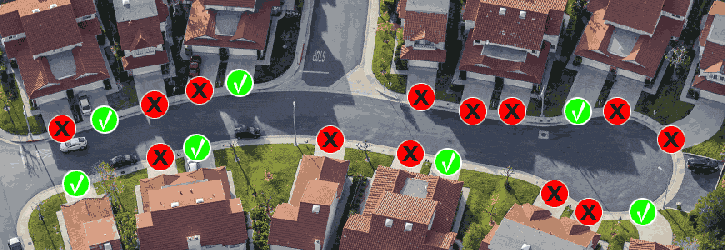TrashBolt Helps Haulers Capture On-demand Customers
In an era where everything is at your fingertips, the company helps haulers meet the needs of on-demand customers.
Sponsored Content
In today’s world, consumers expect to be able to find, search, examine, buy, sign and pay for products and services in a flash. And with digital giants like Amazon and Expedia, they can do just that. Now, one company is thinking outside the box and giving consumers and waste haulers an easier way to connect.
Conceived by SalesStryke, both TrashBolt and GarbageBolt make it simple for haulers to display their service offerings and pricing for on-demand customers to find and purchase waste hauling services. This is done through an online payment portal deployed on the hauler’s website called TrashBolt for Haulers and a national online waste services booking site called GarbageBolt.
The company team members know what haulers and customers need because the company used to be a hauler. The hauling company was purchased by Waste Management last year, but its innovative technology is now available to haulers nationwide.

“We operated as a hauler for nine years, and Waste Management eventually acquired our routes and customers in part because of our density,” says Ryan Hasse, CEO of TrashBolt. “We started the development of TrashBolt and GarbageBolt about four years ago and deployed the two products a year and a half ago. The systems have been tested and proven to work, and we believe we are the right solution for any hauler that’s ready to win.”
As the company continues to grow, it’s focusing on creating an entire suite of products, ideas and methodologies so that haulers can gain more customers and ultimately increase their top and bottom line growth.
“A successful business model for us is not just selling a hauler software and billing them for it. It’s helping haulers win in whatever way they define that win, and we have the internal resources to do that in addition to providing them with efficient and effective products,” says Hasse.
Waste360 recently sat down with Hasse to discuss the benefits of the TrashBolt and GarbageBolt products and how these products can help haulers improve their top and bottom line growth.
Waste360: What are some of the benefits of TrashBolt and GarbageBolt?
Ryan Hasse: The TrashBolt software sales system is a product for route- or territory-based haulers in the U.S. to deploy on their websites with a view quote button, but our services go much deeper than that. We help haulers create and utilize mobile-responsive websites and strong SEO tools so that they can rise to the top of search engines (like Google). Interested customers can find them online, sign up for services, pay and be done. Eighty percent of customers expect this on-demand option today, and the big national companies like Waste Management and Republic Services are already doing this. The on-demand nature of today’s consumer is often referred to as “The Amazon Effect.”
TrashBolt addresses The Amazon Effect because it is as an online sales portal, an SEO strategy to drive consumers to the hauler’s website, a website strategy to close self-service business and a marketing platform/CRM to close those customers who do not currently utilize self-service. TrashBolt ultimately gives haulers everything they need to target on-demand customers, eliminating the need for customers to call up haulers to find out what services are available to them at what price options. Make no mistake; this is what today’s on-demand customer, well, demands!

While there may be other CRM products out there that some haulers utilize, none of them are route- or territory-based, and that’s what’s important to haulers. Our system has a variety of benefits, including allowing haulers to see the customers and noncustomers they have on a route. This allows them to target exactly where they can gain customers, increasing their density and truck capacity while lowering their cost of sale.
GarbageBolt, on the other hand, is a national online waste services booking website for consumers who want to search their hauler options and pricing, select, pay and done. We refer to this as “The Expedia Effect.” Expedia and Priceline have 95 percent market share. 95! Clearly, consumers use these services so they can see all of their service options and prices in one place and select the right services for their needs.
GarbageBolt, which addresses junk pickup, residential service and dumpster service, allows haulers to show off their niche, whether its valet service, weekly service, biweekly service, etc. Expedia customers don’t always buy on price. Sometimes its travel time, or levels of service or availability of a service like hotels that accept pets. Waste services are no different from the consumer’s point of view, and GarbageBolt provides that.
We also offer GarbageBolt for charity, where a charity can create a donation campaign using our donate now button. Customers who are interested in a service can click the donate now button and purchase a service that results in a donation to a charity. This option benefits the charity as well as the hauler.

Waste360: Can TrashBolt be customized to fit the various needs of different haulers?
Ryan Hasse: Yes. We do offer a standardized implementation for rapid deployment, but we can customize from there.
We start with the route and what’s referred to as a multilayered mapping polygon, which basically means haulers may have commercial services in one area and residential services in another, accurate to the individual address or side-of-the-street level. We can design the system around the hauler’s business units, routes, zones of service, territories, zip codes, you name it, so that customers view exactly what services and pricing a hauler offers based on location.
Waste360: How can TrashBolt and GarbageBolt help improve companies’ top and bottom line growth?
Ryan Hasse: First, we start with the hauler’s business objective. Some haulers want to grow upwards of 30 percent, or position to sell, while others may want to stay the same size but increase margins, strength and marketplace resilience. Once we identify that business objective, we can help haulers automate the self-service sale for the on-demand customer and create downstream efficiencies that they may have not yet addressed.
If top line growth is the objective, the next question becomes where are the customers that they want to get? If they have a truck running at 93 percent capacity in one route and 62 percent capacity in another route, then they are going to focus on the route with the 62 percent truck capacity and use our system to get customers on that route. More sophisticated haulers can even calculate a break-even analyses on a per-route basis, and focus on lowering prices in certain areas to keep up with the competition. This is exactly what Walmart does, which is why their tagline is “watch for falling prices.”

Bottom line growth comes from density, capacity, efficiency and lower cost of sale. Haulers look at density and they know that means profit. Tie that in with improved truck capacity and lower cost of sale and you have a win-win-win-win situation. The first win starts with the consumer who wants the self-service option.
If your sales model is a customer service center with sales reps making commission, you are losing out on the self-service sale that on-demand customers actually want and spending money that may not need to be spent on a sale.
With our system, you’re dealing with digital data at the point of sale opposed to pen and paper. Our system captures all of this data, which can be exported into a hauler’s billing and operations system. This creates efficiencies moving data from the sales team to the billing and operations team in addition to cost of sale gains and improved density capacity. Adding payment card industry (PCI) credit card compliance is icing on the cake.
About the Author(s)
You May Also Like




